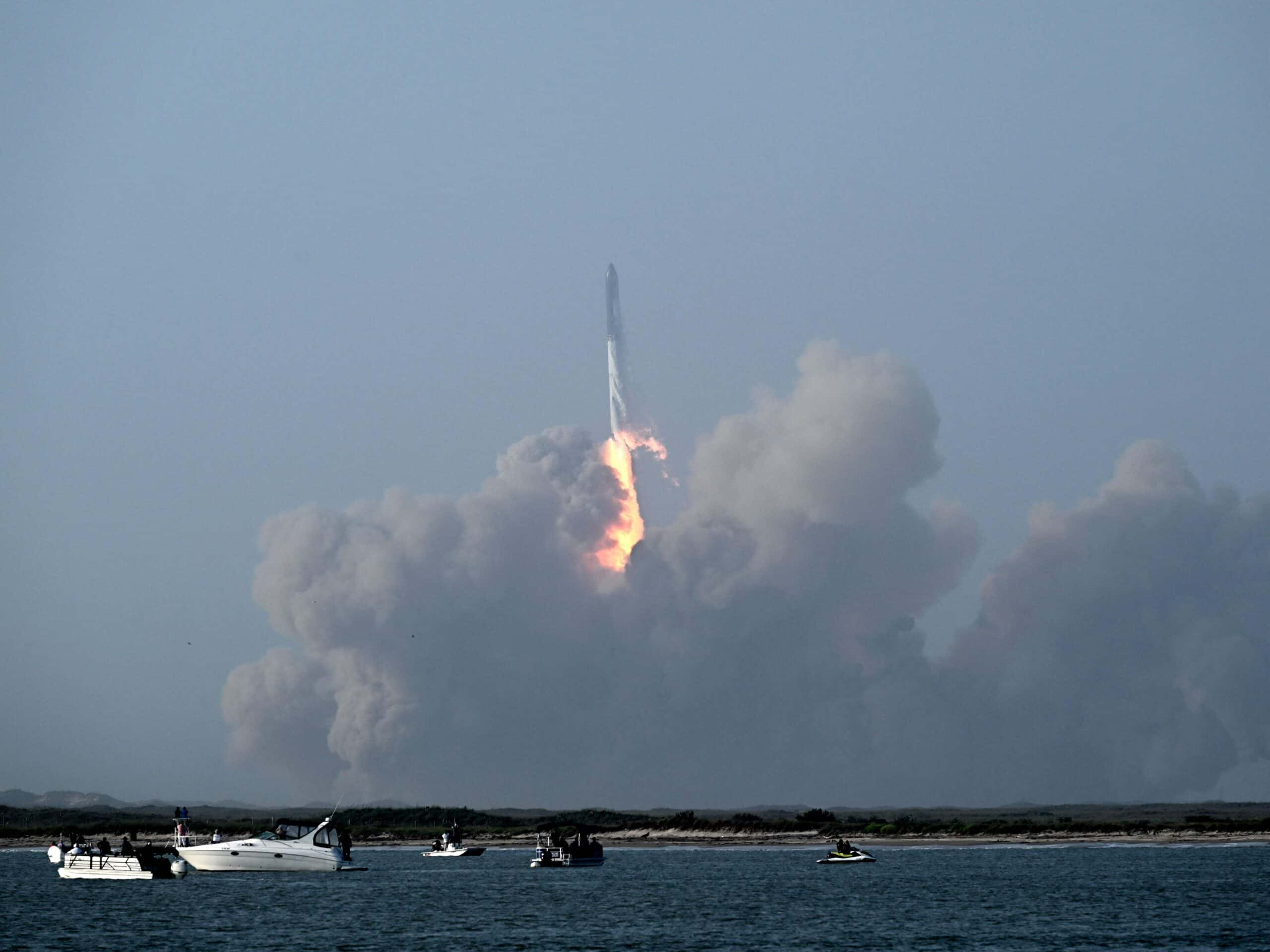The SpaceX Starship mission aimed to propel the Starship to about 90 miles above ground for a 90-minute space journey but ended abruptly due to technical problems.

The latest SpaceX Starship mission faced a setback when the uncrewed spacecraft, designed for lunar missions and beyond, encountered issues shortly after launch on Saturday
From the Starbase launch site near Boca Chica, Texas, the two-stage rocketship successfully propelled the Starship spacecraft toward space. However, complications arose as the Super Heavy first stage booster, after separating from the core Starship stage, exploded over the Gulf of Mexico. Moments later, contact was lost with the core stage, leaving engineers puzzled about the cause.
SpaceX engineer John Insprucker mentioned the possible triggering of an automated flight termination command but lacked clarity on the reason. An explosion was observed in the camera feed about eight minutes into the test, indicating a possible failure at that point. The SpaceX Starship mission aimed to launch the Starship close to orbit and return it to Earth’s atmosphere for a splashdown near Hawaii.
The Federal Aviation Administration confirmed the incident, emphasizing no injuries or property damage occurred
An investigation will follow to understand the failure and prevent similar incidents in the future, potentially influencing SpaceX’s plans and regulatory approvals for future launches. Despite this setback, industry experts noted some success in the test, suggesting that multiple trials are necessary for a project as ambitious and intricate as the SpaceX Starship mission. This setback, while a part of SpaceX’s risk-tolerant approach to testing, highlights the challenges in their quest to develop a versatile spacecraft for lunar and Mars missions.
The ultimate goal remains to achieve a successful flight, pivotal for NASA‘s plans of utilizing the Starship for upcoming moon missions under the Artemis program. SpaceX’s pace of development and subsequent testing will likely depend on regulatory reviews and technical enhancements to ensure the spacecraft’s reliability.
Various industry figures, including investors and CEOs of space-related companies, anticipate SpaceX’s resilience in resuming tests post-investigation, emphasizing the company’s readiness to overcome setbacks in pursuit of its goals.
READ ALSO: Unveiling The Magnificent Total Solar Eclipse 2024: A Celestial Spectacle Across The Americas




